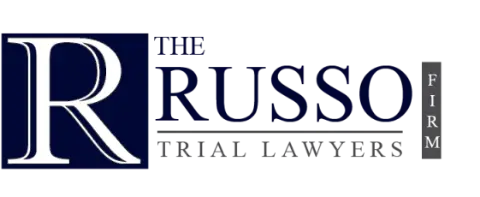Summary:
- A product liability claim attempts to hold a designer, manufacturer, distributor, or seller accountable for a dangerous product
- Product liability claims can be based on design defects, manufacturing defects, or failure to warn
- Victims of dangerous products must prove they suffered injuries and damages because of a product’s defects
- People can file product liability claims for breach of warranty
People can suffer severe injuries from defective products, such as household appliances, car parts, and power tools. Victims of faulty products can file product liability claims to pursue compensation for damages from product designers, manufacturers, distributors, and sellers. Their negligence caused the defects that led to the malfunctioning product.
Products can have design, manufacturing, or labeling defects. These can lead to the product not working as intended or exposing people to harm unexpectedly. Victims of dangerous products can pursue compensation for damages, such as medical bills, lost wages, and pain and suffering, by filing a product liability claim with the at-fault party.
What is a Product Liability Claim?
A product liability claim is filed with a company in the distribution chain that makes an error, causing the product to malfunction. Defective products can expose people to significant physical trauma, resulting in severe injuries. Companies whose negligence leads to a defective product causing injuries can be liable for damages in a product liability claim.
Some common examples of defective products include malfunctioning airbags, household products, malfunctioning construction equipment, and dangerous toys. People can also sustain severe injuries from defective medical devices and dangerous drugs.
What are the Three Types of Product Defects?
Three types of product defects can serve as the basis for a product liability claim: design defects, manufacturing defects, and failure to warn. A design defect is when the designers make a mistake in crafting the product’s design that causes it to malfunction. For example, the design may include two materials that can create a dangerous quality when used together.
Manufacturing defects occur when the manufacturers fail to follow the design and create a product that doesn’t work correctly. An example would be using the wrong metal in steering components for a car. This can cause them to malfunction, leading to the driver losing control of their vehicle and suffering a car accident.
Failure to warn is when there is no warning label to caution consumers about a product’s dangers. Warning labels can help people use a product safely, as they will know what can happen when using a product. Failing to warn about a product’s danger can expose consumers to harm they did not realize they could suffer.
What Companies in the Distribution Chain Can Be Held Liable for a Product Liability Claim?
Any company in the distribution chain can share liability for a defective product. These are the companies responsible for designing, manufacturing, distributing, and selling a product. They all must ensure that products that reach the market are safe for use and will not malfunction. Defective products can expose consumers to harm, leaving them liable for damages.
The following are some potentially liable parties in a product liability claim:
- Designers
- Manufacturers
- Distributors
- Wholesalers
- Retailers
Proving Causation in a Product Liability Claim
Recovering compensation for a product liability claim involves proving causation. This means product liability victims must prove that the product’s defect was a major contributing factor to causing their injuries. They must be able to establish through evidence that they would not have suffered their injuries and damages if not for the defect that caused the product to malfunction.
Product liability victims must also establish the at-fault party’s negligence to recover fair compensatory damages. This means they must prove the at-fault party breached the duty of care they owed you and caused damages as a result. Some evidence that can help include the defective product itself, expert witness testimony, medical records, etc.
Contact The Russo Firm for Help With Your Product Liability Claim
The product liability lawyers at The Russo Firm can help you recover compensation for medical bills, lost wages, and pain and suffering caused by dangerous products. We understand how harmful a defective product can be and wish to help you recover from severe injuries caused by the at-fault party’s negligence.
Our product liability attorneys can use their decades of experience to craft a personalized legal counsel plan to help you recover fair compensatory damages. Contact us for a free product liability case evaluation today at (561) 270-0913 or leave a message on our online contact page.
Frequently Asked Questions About Product Liability Claims
How Does Intended Use Affect a Product Liability Claim?
Recovering compensation for a product liability claim requires the victim to have used the product as the manufacturer intended. If the victim suffered a serious injury after using the product the way it was intended, then they can file a product liability claim to pursue compensation for economic and non-economic damages.
They cannot file a claim if they intentionally used the product in a dangerous way that the manufacturer didn’t intend. For example, the manufacturer of a stovetop cannot be held liable for a person holding their hand against a hot object and suffering a burn injury. They can be held liable if the customer used the stove correctly but a fire started that caused an injury.
Can You File a Product Liability Claim for a Breach of Warranty?
Some products contain express warranties, guaranteeing that a product will work a certain way. These warranties also provide guarantees of safety. These express warranties can come from the product’s packaging, instructions, contract, or marketing and advertising.
However, these guarantees do not always mean a product cannot cause injury. Defective products can breach this warranty and lead to severe injuries like facial injuries, broken bones, and shoulder injuries.
When a product breaches the express warranty guaranteed to the customer, the victim can file a product liability claim to pursue compensation for damages. They can present a written guarantee as evidence of the breach of warranty.
How Can a Product Liability Lawyer Help With Your Claim?
Hiring a lawyer can help with the process of recovering compensation for a product liability claim. An experienced product liability lawyer can use their expertise in product liability claims to help you through the many steps involved in the process. They can assist in assessing damages, determining the liable party, collecting evidence, and explaining state laws.
One meaningful way they can help with your product liability claim is by negotiating a settlement with the at-fault party’s insurance company. These negotiations can be tricky, as some insurance companies will attempt to deny, delay, or devalue your settlement to keep their profits up. A product liability lawyer can help with negotiations and prevent a reduced settlement.

